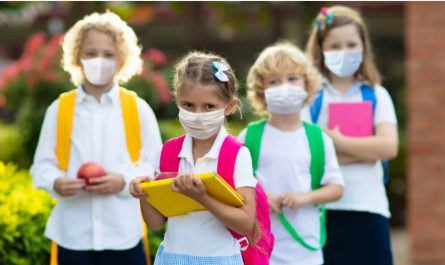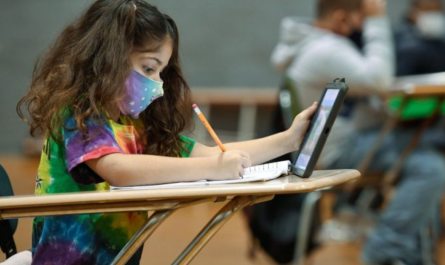Mental well-being is an essential part of a child’s overall health and how the child learns to cope, think, feel and behave effectively in challenging situations. It helps in maintaining a positive quality of life and functions well at home, in school and in society.
As children grow up, their emotions and behaviors can change rapidly and understanding them can be difficult. This is a part of the developmental phases. However, elders can identify the early signs and symptoms of distress by paying attention to children’s behavior. For many adults, the mental health disorder can be traced to childhood experiences.
According to the National Institute of Mental Health (NIMH), there are ways to detect childhood mental disorders. There are certain risk factors – such as those related to genetics, experiences like bullying, sexual assault, and the environment – that may lead to mental disorders. Therefore, it is essential that these factors are diagnosed as early as possible. NIMH says studying them can help us in understanding how these disorders develop, and can guide us in detecting them at an early stage.
Some of the childhood psychiatric disorders are ADHD, Autism, epilepsy, ODD or conduct disorder, OCD, depression, anxiety, substance use, self-harm, gender identity issues, eating disorder and PTSD etc.
Globally, around 10-20% of children and adolescents experience mental health issues, according to the World Health Organization (WHO). Mostly, children’s mental health problems begin by the age of 14years. A majority of them reach adulthood without even realizing their own condition and without seeking any professional help. Timely diagnosis, which is critical to preventing or slowing down the progression of mental illness, can keep children from harm’s way and from taking any extreme step, such as committing suicide, which is the third leading cause of death among children in the 15-19 age group. Suicide is a major concern in the U.S.
Warning signs of mental illness in children
It is difficult to observe and determine if the child’s behavior is a mental disorder or just part of natural growth and development. Children express their feelings and respond to stress in different ways. When stressed, they may respond with increased irritability, aggression or show physical symptoms like headache, fatigue, etc. But if the signs and symptoms last for longer than two weeks, then parents and teachers need to check the child’s daily functioning at home, in school, with friends and others [ 1 ].
14 common signs that help spot mental issues
- Temper tantrums
- Outburst or extreme Irritability
- Excessive worries or anxious
- Restlessness or cannot sit in one place for a longer period
- Withdrawal from friends, family, and others
- Low mood or sadness
- Lack of attention and concentration
- Refusal to go to school or deteriorate in academic performance
- Sleep disturbance
- Repetitive behavior- doing one thing again and again
- Having Suicidal thoughts or death wishes
- Bad habits like stealing, lying, frequent fights with others, roaming around, and getting involved in use of drugs
- Self-smiling, self-talking and self-harm
- Loss of interest in daily activities.
Importance of Play
Play is a healthy activity that helps children grow and develop. Children learn and practise many skills through play, including fine and gross motor skills, language, socialisation, personal awareness, creativity, emotions and problem-solving. The benefits of play are progressive in nature, meaning that the skills children develop during their play build upon each other.
Mostly, children express their emotions such as tension, sadness, anger, happiness, and fear through play or an art. Mental health activity or play not only helps them to express themselves but it also helps to overcome and learn different skills.
10 stages of activities/play for early childhood development
- Unoccupied play (Birth to 3 months): Parents don’t need to participate, and just need to allow infants to play by themselves with their hands and feet.
- Independent Play (Preschool children): Allow your child to play by themselves. It gives them unique opportunities to explore their own interests and learn to set their own agenda. This stage involves games, such as stuffed animals, blocks, toy figures, dress-up costumes, noisemakers, and books.
- Onlooker play (2 to 3 years): As the name suggests, children just observe other children at play without participation. By watching and learning from others, they gain confidence and build skills before joining others in the play.
- Parallel Play (up to 3 years): In this stage, children play together with their own toys and follow their own interests. They learn play techniques and activities from one another by simply observing. Even though they just play on their own, they still learn from other children and get more ideas.
- Associative play (3-5yrs): During this stage, children play side by side, they are involved in the activities with other children though playing on their own. Example, building a house with sand, it helps children to be more creative (thinking of building in a different design, size, and shape), socialization (let me help you or can you help me), cooperation and problem solving (saying like better we build our house together), and language development (communicating together to each other). This is an important stage of play, where children begin to mingle or make friends.
- Cooperative play (up to 5 years): At this stage, children utilize their skills whatever they learn and put them into action by playing together. For instance, playing with the ball, building a puzzle or blocks or any other activities where they need to play together. This stage helps the child to build social skills and future interactions as the child becomes older [ 2 ].
- Fine motor activity (E.g., playing with dough and putty, painting, gardening)
- Gross motor activity (E.g., Dancing, playground play, cycling)
- Symbolic play (E.g., playing with paper as money)
- Imaginary games (E.g., reading, dress up)
For older children and adolescents
Competitive play: As a child is involved in competitive activities, they learn about the rules and regulations, discipline, patience, their strength and weakness and emotional acceptance whether winning or losing. For example: Football, dance competition, treasure hunts, quizzes etc.
Constructive Play: When children play constructive activities, it helps them to use cognitive skills, decision making, logical thinking and reasoning. For example: constructing a house with couch pillows or sand, and making a road for toys, cars etc.
As children may interact with many people and encounter different circumstances, parents must ensure that they are aware of empathy, manners and above all, personal safety.
- Teach them about different emotions and their meaning.
- Teach them about the different parts of the body and about good and bad touch.
- Reduce their screen time and encourage them for outdoor activities.
- Teach them about gratitude rituals, forgiveness, and generosity.
- Encourage them to do mild to moderate physical exercise.
Overall benefits of mental health activities for children:
Physical benefits:
· Helps improve balance and coordination
· Develops motor skills
· Develops senses
· Provides a form of exercise [3]
Emotional benefits:
· Develops confidence
· Enjoys and has fun
· Gains exposure to new situations and feelings
· Learn to express their needs
Intellectual benefits:
· Develops language skills
· Learns about the world
· Teaches concept (e.g. numbers)
· Encourage imagination
Social benefits:
· Learn to sharing
· Learn to work as a team
· Teaches rules and fair play
· Improves social skills
Mental health activity or play is a very important part of a child’s development and should be encouraged and supported in daily life. However, children need their own time and space to learn these skills, not necessary for parents to be with them all the time. But there are certain activities, where parents actively need to teach their children. Encouraging children to be more physically active rather than allowing them to spend excessive time on screen will give them a better quality of life [ 4 ].




